Overview
The article delineates ten significant benefits of employing automated pipettors in laboratory environments, underscoring their critical role in augmenting precision, efficiency, and reliability in liquid handling. Each benefit is meticulously supported by examples illustrating how these advanced devices effectively minimize human error, conserve time, reduce operational costs, and ensure adherence to regulatory standards. Consequently, they substantially enhance overall laboratory productivity and improve research outcomes. By integrating automated pipettors, laboratories can achieve a higher level of accuracy and consistency, which is essential for successful scientific endeavors.
Introduction
Automated pipettors are revolutionizing laboratory practices, delivering a precision and efficiency that manual methods cannot match. These advanced devices streamline liquid handling processes, significantly reducing human error and ensuring consistent, reliable results across various scientific disciplines. As laboratories strive for innovation, one pivotal question emerges: how can embracing automation truly transform research workflows and propel scientific advancement?
JM Science Automated Pipettors: Enhance Precision in Liquid Handling
JM's mechanized liquid dispensers deliver exceptional accuracy in fluid management, a critical factor for achieving precise experimental outcomes. These advanced devices utilize cutting-edge technology to guarantee consistent volume delivery, effectively minimizing the variability often associated with manual pipetting. This level of precision is vital in high-stakes applications such as (HPLC) and medical diagnostics, where even minor discrepancies can result in significant errors in data interpretation. By integrating JM's automated pipettor into their research workflows, investigators can improve the reliability of their results and streamline their procedures, ultimately fostering greater scientific advancement.
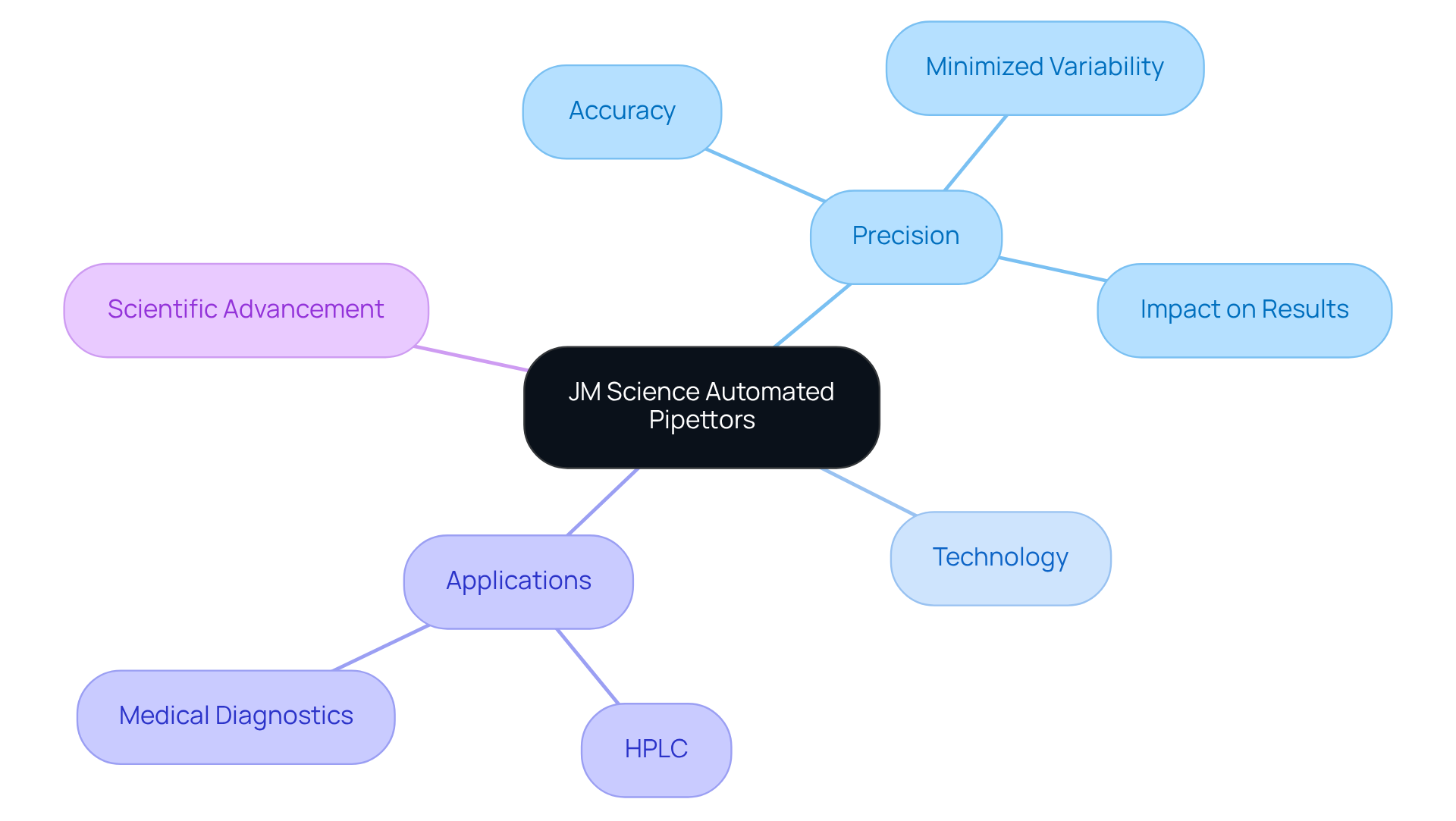
Increase Efficiency: Streamline Your Liquid Handling Processes
The automated pipettor from JM Science significantly streamlines laboratory processes, enabling increased throughput without compromising accuracy. By automating repetitive tasks with an automated pipettor, these instruments liberate valuable time for researchers, allowing them to concentrate on more complex analyses and experiments. The integration of automated pipettor systems accelerates sample processing, which is essential in high-demand environments such as pharmaceutical research and clinical diagnostics. This heightened efficiency not only shortens project timelines but also boosts overall productivity within the lab.
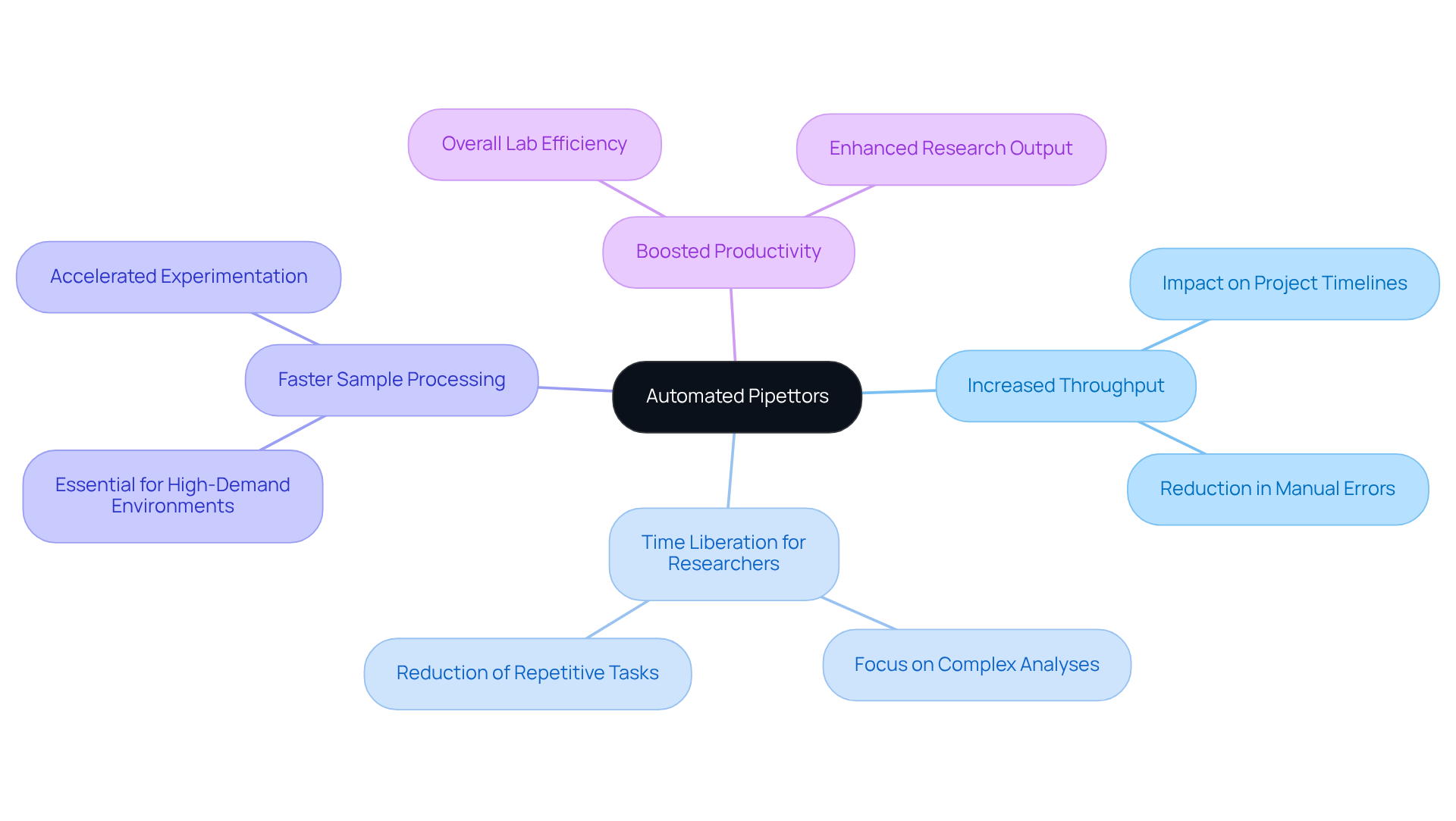
Minimize Human Error: Achieve Consistent Results with Automation
The utilization of robotic pipette devices offers a significant advantage: a marked reduction in human error. Manual pipetting often leads to inconsistencies caused by variations in technique, fatigue, and environmental factors. In contrast, the automated pipettor eliminates these variables by delivering precise, repeatable actions that guarantee consistent results across multiple experiments. This reliability is especially crucial in regulated environments where data integrity is of utmost importance. By adopting JM's automated pipettor, laboratories can enhance the reproducibility of their results, leading to more reliable conclusions and improved research outcomes.
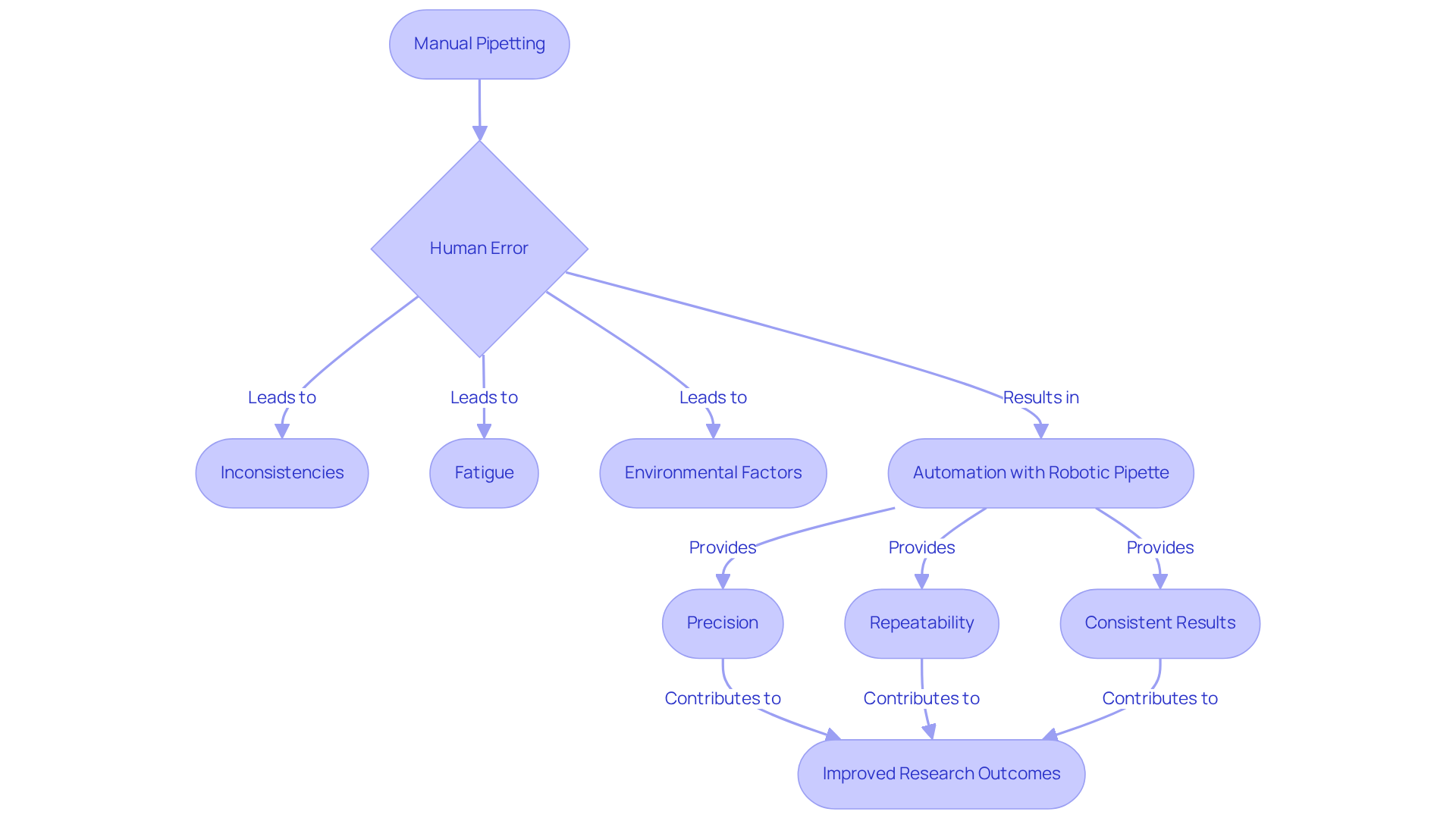
Save Time: Accelerate Your Laboratory Workflows
Automated liquid handling devices significantly reduce the time required for liquid handling tasks. By streamlining the pipetting process, researchers can accomplish tasks that typically take hours in mere moments. This enhancement of workflows is especially beneficial in high-throughput environments, where the capability to process multiple samples concurrently results in considerable time savings.
The from JM Science are expertly engineered to accommodate various volumes and types of liquids, enabling quick adjustments tailored to the specific requirements of different experiments. This adaptability not only conserves time but also elevates the overall efficiency of laboratory operations.
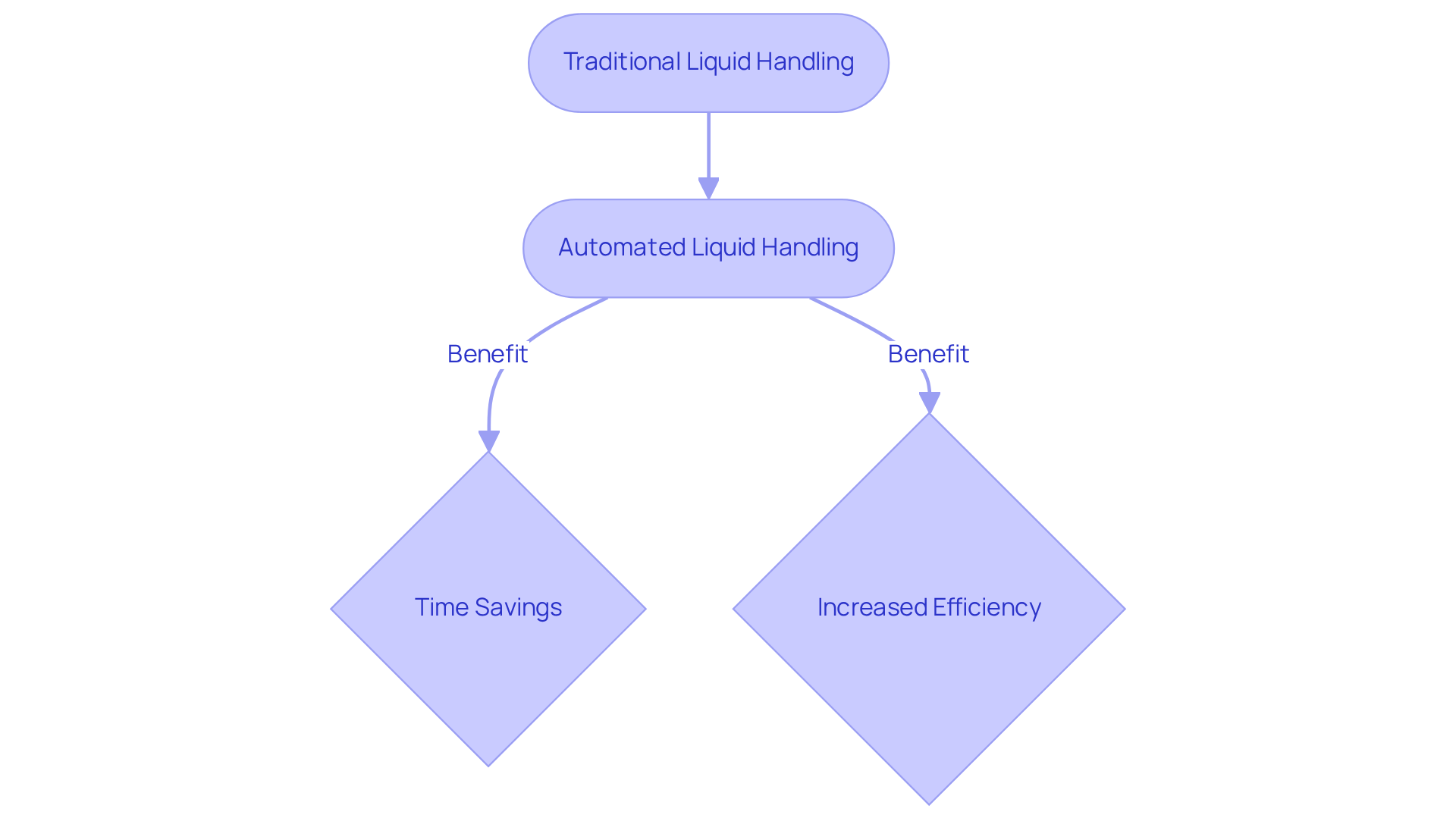
Scale Operations: Adapt to Growing Laboratory Demands
As the demands of research facilities escalate, the necessity for scalable solutions becomes paramount. JM Science's automated pipettor is expertly designed to adapt to varying workloads, making it ideal for facilities experiencing fluctuations in sample volume. Whether a laboratory is managing a small batch of samples or gearing up for an expansive project, can be effortlessly adjusted to meet specific requirements. This remarkable adaptability not only guarantees that research facilities sustain high productivity levels but also empowers them to swiftly seize new research opportunities without the burden of extensive retraining or process overhauls.
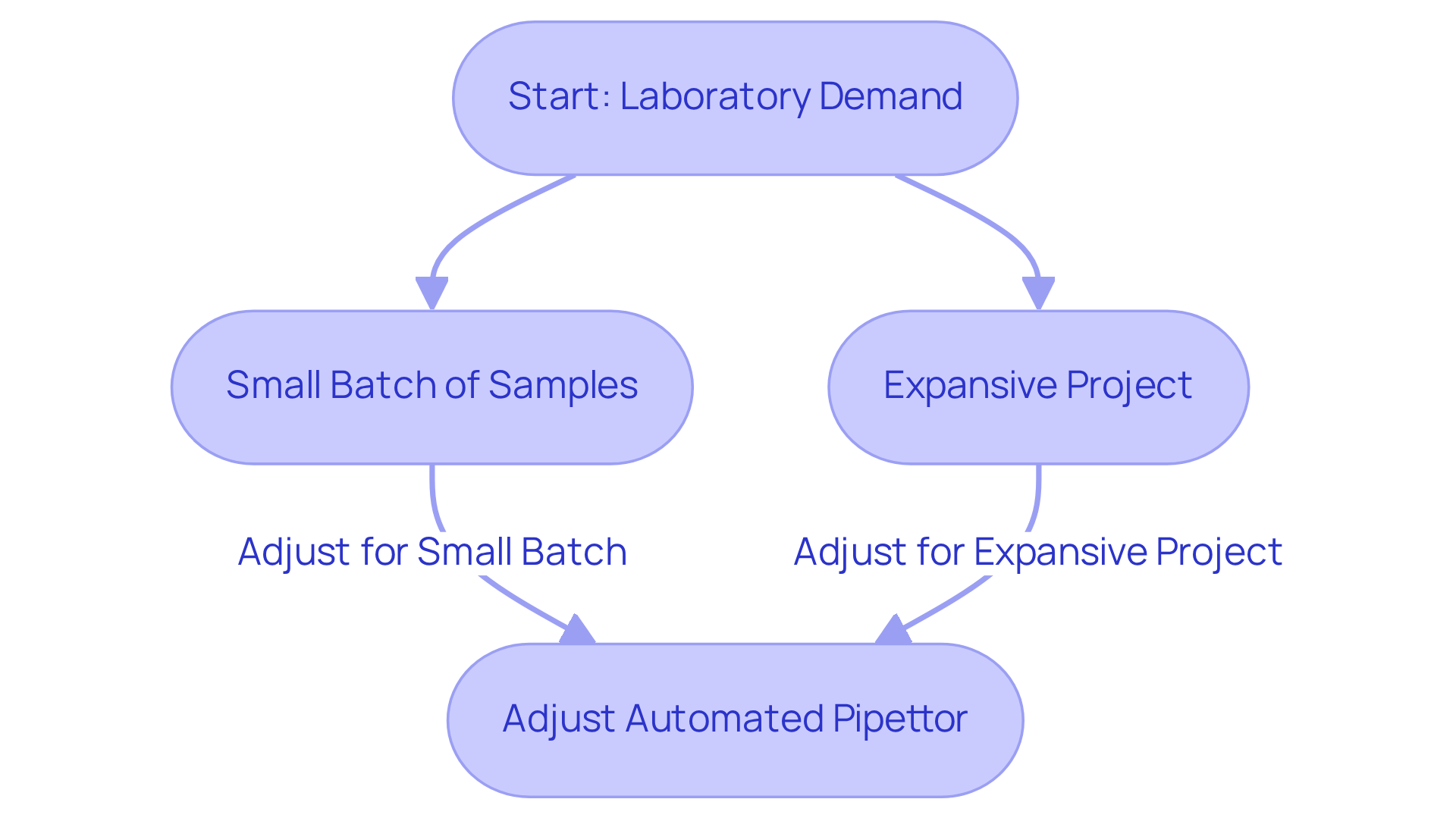
Versatile Applications: Utilize Automated Pipettors Across Disciplines
The automated pipettor from JM Science is an essential tool that spans a wide array of scientific disciplines, including chemistry, biology, and medical diagnostics. Their capability to manage various liquid types and volumes positions them as for applications ranging from routine sample preparation to intricate assay development. This adaptability empowers laboratories to streamline processes, minimizing the reliance on multiple instruments and ultimately conserving space and resources. By integrating automated pipettors into their workflows, researchers can significantly enhance their operational capabilities and elevate the quality of their results across diverse projects.
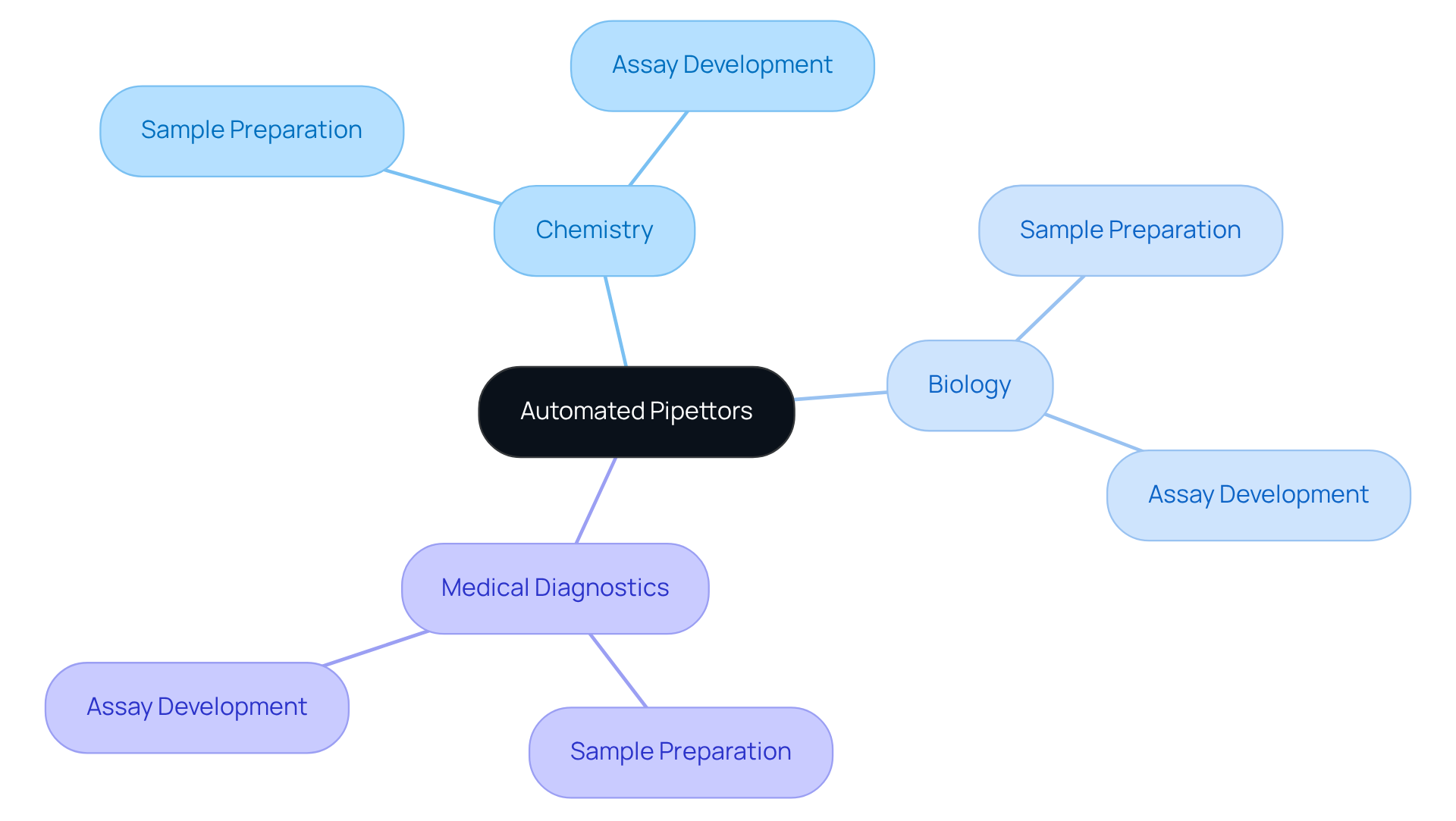
Cost-Effective Solutions: Reduce Reagents and Waste
Automated pipettors are essential in achieving cost savings by minimizing reagent usage and reducing waste. By consistently delivering accurate volumes, these devices ensure that research facilities utilize only the necessary amounts of reagents, which can lead to significant reductions in operational expenses over time. Moreover, the decrease in waste not only supports the facility's budget but also enhances . JM's automated pipettor devices are designed to maximize resource utilization, making them a prudent investment for research facilities that aim to enhance efficiency while effectively managing expenses.
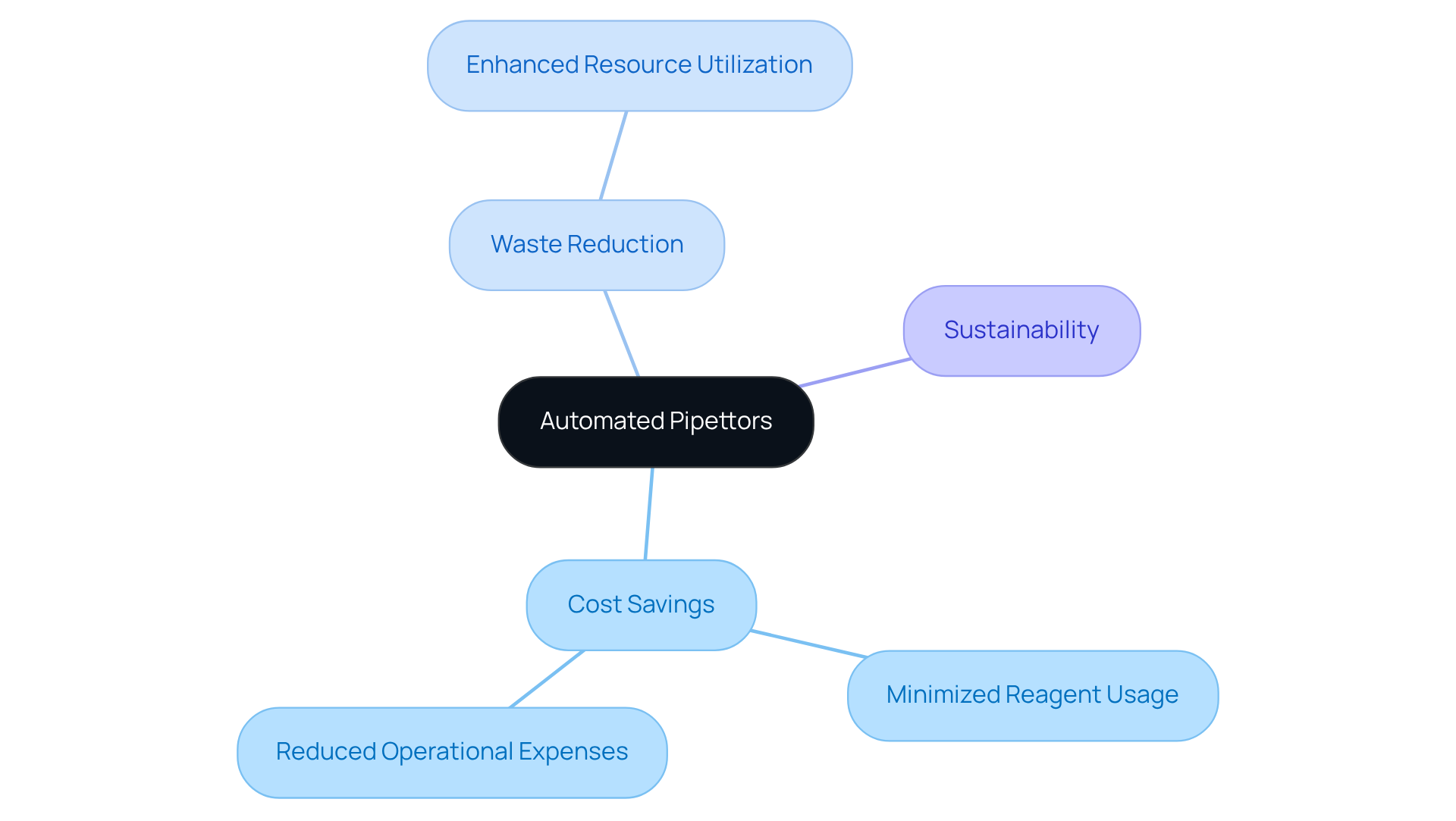
Ensure Compliance: Meet Regulatory Standards with Automation
In regulated environments, compliance with industry standards is not just important; it is paramount. Automated pipettors from JM Science play a crucial role in helping facilities meet these regulatory requirements by ensuring consistent and precise liquid management. By using an automated pipettor to automate pipetting processes, these devices significantly reduce the risk of human error—a common source of non-compliance.
Furthermore, they can be seamlessly integrated with software solutions that monitor and record all pipetting activities, ensuring that research facilities maintain comprehensive records for audits and inspections. This integration not only enhances operational efficiency but also fortifies , enabling facilities to adhere to the highest standards of quality and safety.
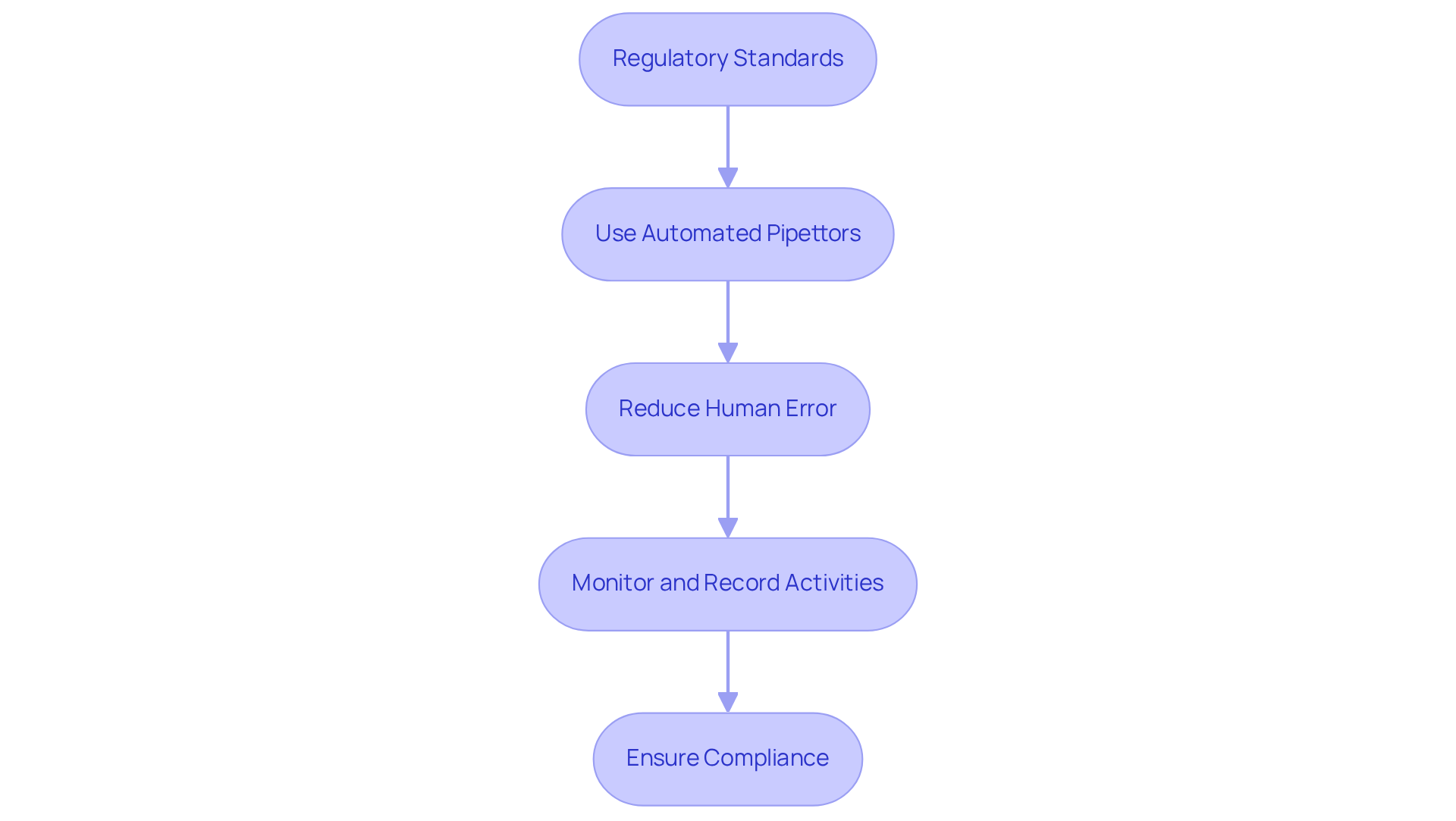
Integrate Seamlessly: Enhance Existing Laboratory Technologies
JM Science's automatic liquid handlers are engineered for seamless integration with existing laboratory technologies, significantly enhancing workflow efficiency. These advanced devices connect effortlessly to information management systems (LIMS) and other platforms, facilitating efficient data transfer and improving process coordination. This integration simplifies workflows while also boosting data accuracy and traceability. By incorporating automated pipettors into their current systems, research facilities can create a more cohesive and effective operational environment, ultimately leading to superior research outcomes.
Embrace the Future: Stay Ahead with Automated Pipettors
In the ever-evolving landscape of research, embracing automation is essential for maintaining a competitive edge. Automated pipettors are not merely a trend; they symbolize the future of laboratory practices, providing advanced features that significantly enhance precision, efficiency, and reliability. By integrating these cutting-edge technologies, facilities can improve their existing workflows and strategically position themselves for future advancements in research and development. JM Science's unwavering guarantees that their automated pipettors feature the latest technology. This empowers laboratories to stay ahead of the curve, effectively meeting the dynamic demands of the scientific community.
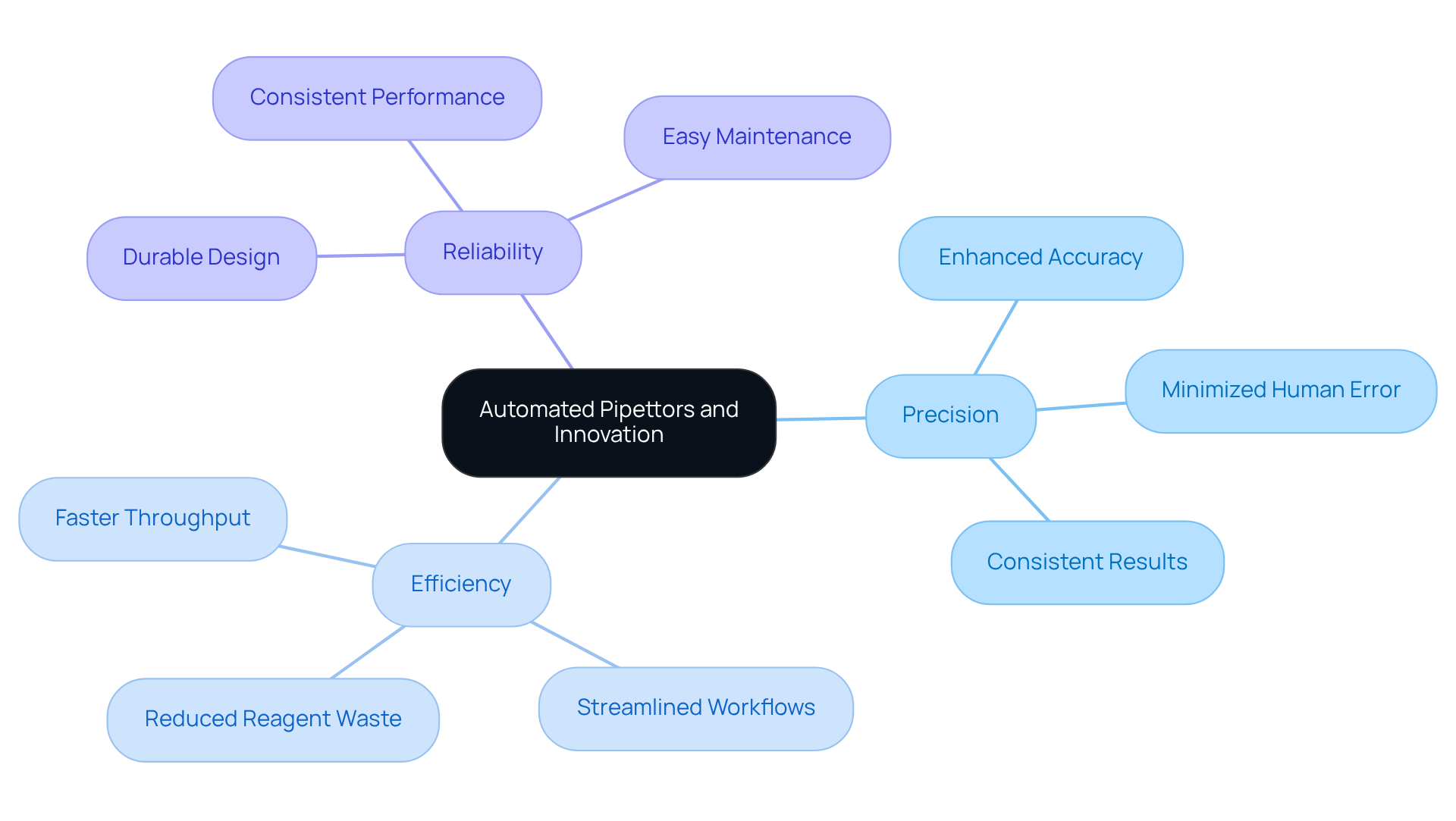
Conclusion
The integration of automated pipettors into laboratory workflows marks a significant advancement in achieving precision and efficiency in liquid handling. These sophisticated devices from JM Science not only enhance the accuracy of experimental results but also streamline processes that are critical in high-stakes environments. By minimizing human error and ensuring consistent performance, automated pipettors facilitate reliable data collection, which is essential for scientific progress.
Key benefits of using automated pipettors include:
- Increased efficiency
- Time savings
- Scalability
- Versatility across various scientific disciplines
Moreover, the cost-effectiveness of these devices, along with their ability to ensure compliance with regulatory standards, underscores their vital role in modern laboratories. As research demands escalate, the adaptability of automated pipettors empowers laboratories to efficiently manage fluctuating workloads without compromising quality or accuracy.
Embracing automation in laboratory practices is not just an option; it is a necessity for maintaining competitiveness in the ever-evolving field of research. The future of scientific inquiry hinges on the capacity to leverage advanced technologies that enhance operational capabilities. By adopting automated pipettors, laboratories can not only refine their current workflows but also prepare for the challenges and opportunities that lie ahead, ensuring they remain at the forefront of innovation within the scientific community.




